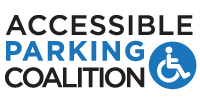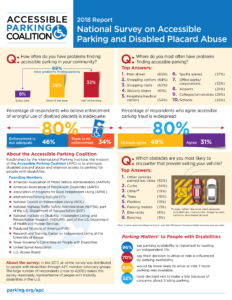Deterring Access Aisle Parking Violations
The ability to safely park at one’s destination is an important component of community participation for people with disabilities. With the proper permit, people with disabilities should be able to use accessible parking spaces in public parking lots. However, a lot of people with disabilities have encountered barriers to parking. Researchers at the Research and Training Center on Independent Living at KU conducted two studies on accessible parking. This study examined factors related to access aisle violations. Access aisles are the diagonally marked spaces adjacent to the accessible parking spaces that are designed for use by people with disabilities. Access aisles are usually marked with yellow, white, or blue diagonal stripes.
Source Credit: University of Kansas Research and Training Center on Independent Living
This material is reproduced with permission of the University of Kansas Research and Training Center on Independent Living. In addition, please add “The contents of this publication were developed under a grant from the National Institute on Disability, Independent Living, and Rehabilitation Research (NIDILRR grant number 90RT5015). NIDILRR is a Center within the Administration for Community Living (ACL), Department of Health and Human Services (HHS). These contents do not necessarily represent the policy of NIDILRR, ACL, or HHS, and you should not assume endorsement by the Federal Government.
DOWNLOAD: Deterring Access Aisle Parking Violations Fact Sheet
(PDF | 826kb)

